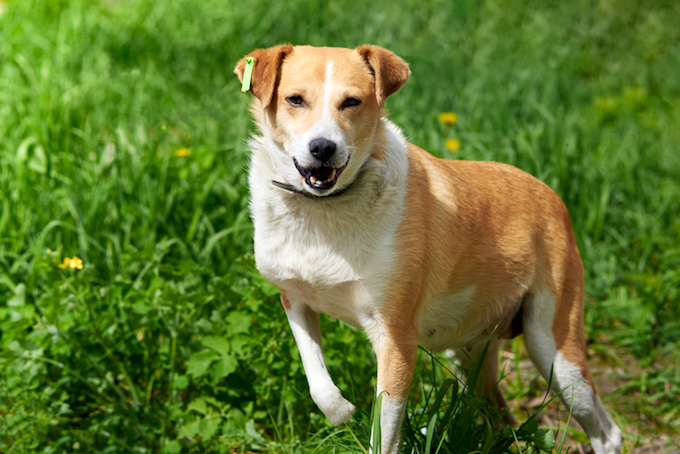Osteoarthritis in dogs is a degenerative disease that affects the joints. Sometimes, the condition is referred to as just OA.
The condition is caused by the cartilage that protects a dog’s bones wearing down. Subsequently, joint pain and inflammation can occur.
Technically, the condition is also known as degenerative joint disease (DJD).
If you see the signs of the condition in your dog, then get to a veterinarian for a proper diagnosis and treatment.
Here’s what you should know about the symptoms, causes, and treatments for the condition.
Symptoms of Osteoarthritis in Dogs
The condition produces a sizable range of symptoms. For example, some of the most common symptoms include:
- Limping
- Stiffness
- Lameness
- Posture changing
- Soreness
- Gaining weight
- Avoiding exercise
- Walking like a bunny hops
- Slouching
- Appetite loss
- Becoming withdrawn
Causes of Osteoarthritis in Dogs

The cause of the condition depends on whether a dog is suffering from primary or secondary osteoarthritis. For example, the cause of primary cases of the condition is often unknown. However, secondary cases of the condition can be caused by the following:
- Hip dysplasia
- Injury
- Elbow dysplasia
- Patellar luxation
- Torn cruciate
- Obesity
- Old age
Treatments for Osteoarthritis in Dogs
Firstly, your vet will ask about your dog’s symptoms. Secondly, your vet will ask about your dog’s full medical history.
Thirdly, your vet will carry out a full physical examination. Your vet will pay special attention to your dog’s joints and also look out for any fluid accumulation. If there is any fluid, your vet will take a sample to analyze.
Additionally, your dog’s blood and urine will be tested. Also, X-rays, MRIs, and CT scans can be effective ways to confirm the condition.
Unfortunately, the condition is a progressive disease. This means that it cannot be cured. However, your vet will focus on pain management for your dog. For example, physical therapy, acupuncture, and laser therapy can all be helpful.
Additionally, medication can be prescribed to help with any inflammation. As always, if your vet prescribes your dog any medicine, make sure to stick to the correct dose and frequency instructions. Also, complete the full course of medicine.
Finally, keeping your dog on a healthy diet can help. This is because obese dogs are more likely to suffer from the condition. Your vet can help formulate a safe and nutritionally-blalanced diet for your dog. In some cases, this can also include supplements like omega-3 fatty acid.
Have you ever cared for a dog who suffered from this condition? How did your vet help your dog recover? Let us know in the comments section below.









